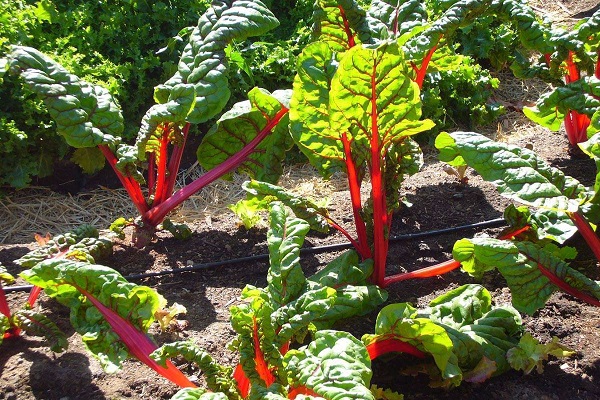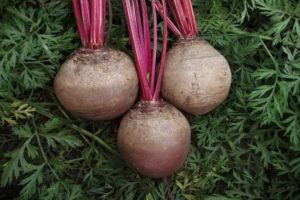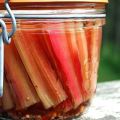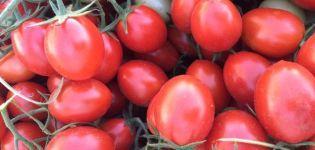Description of the variety of leaf beet Swiss chard, features of cultivation and care
The Swiss chard beet is not yet familiar to everyone, although it is quite widespread. Only the leaves of this plant are suitable for food. To grow it on your site, you should familiarize yourself with the features of the leaf beet, as well as the necessary care for the plant.
Few gardeners plant it on their plots. Although it is healthy and great for eating. The leaves of the plant are not inferior to table beets in their content of nutrients and vitamins.
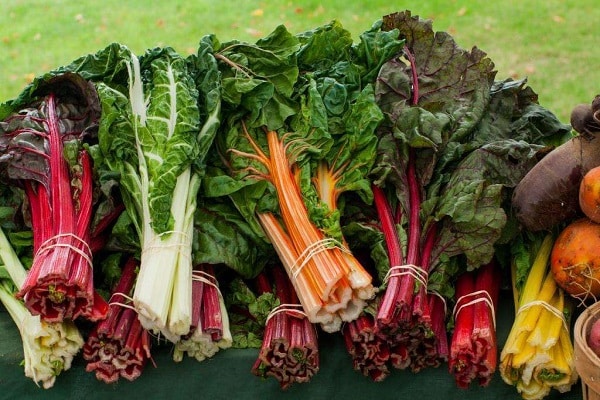
The cultivation of chard bears a resemblance to growing regular beets... The available differences relate only to the landing and some issues of caring for it. This is a rather unpretentious plant and bears crops all year round, provided it is grown in a heated greenhouse, and in open beds - from early spring to frost.
Description of chard
Leaf chard belongs to the Amaranth family, to the Beet genus. All parts of the plant are suitable for food, except for the roots. This culture is popular in European countries, Japan and the United States.
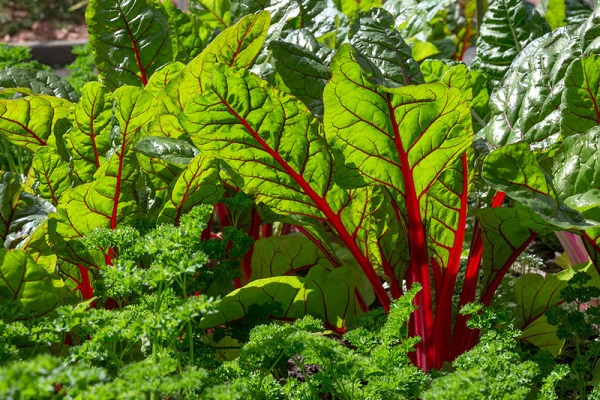
Specifications:
- In the first year of cultivation, this plant gives only green mass, and in the second year it forms seeds.
- The leaves taste like a young beet.
- Such a plant is highly resistant to cold climatic conditions. It grows successfully at an air temperature of + 6-7 degrees. This property allows sowing seeds in open ground starting from April. If the planting is carried out in the middle of summer, then the greens are harvested in the autumn.
Sowing of this crop is carried out both by seed method and with the help of seedlings in order to get an earlier harvest.
Please note that sowing chard can be done in the fall to harvest fresh greens in early spring.
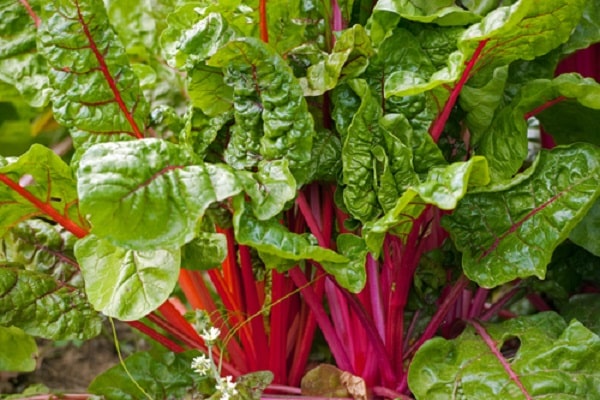
Basic care requirements
This type of green does not require special growing conditions. But to get a crop in the form of large leaves, you should regularly water and apply a small amount of mineral fertilizers dissolved in water. It is not recommended to use nitrogen fertilizers because they cause nitrate build-up in foliage.
The collection of leaves is carried out gradually, cutting off the lower leaves. It is a biennial plant. Therefore, powerful roots can be left in the garden for the winter, covered with mulch. The next year, in springtime, the plant will again begin to release shoots suitable for food.
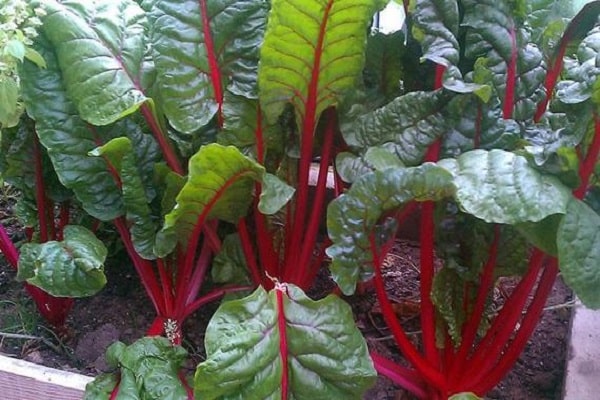
Requirements for growing conditions
Chard grows on almost all types of soil substrates. But the highest collection of foliage in fertile areas.Therefore, when drawing up a crop rotation plan, it is necessary to envisage planting this crop in those areas that were fertilized with organic fertilizers in the previous year.
Planting of plants is carried out when the soil warms up to a depth of 3-4 cm. When sowing at an earlier date, cover the bed with a film to activate germination. Usually, after plant emergence, thinning is carried out. As the bushes grow, they are huddled to strengthen the root system.
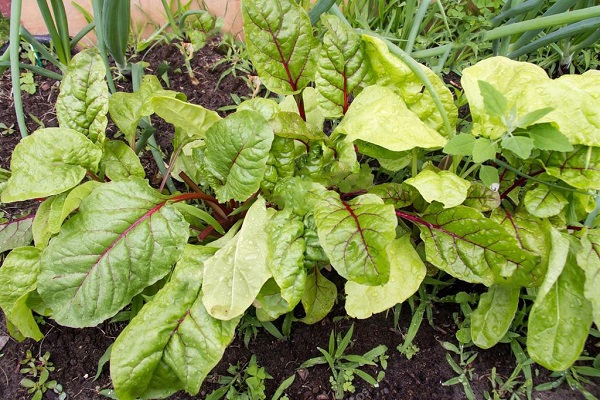
Ways to use chard beet leaves
Since the green mass of chard contains a large amount of vitamins and substances useful for the human body, it is included in the diet in the same way as spinach or other leafy crops.
It is indicated for people diagnosed with diabetes mellitus, as well as for those who have a reduced level of red blood cells. The use of such leaves with high blood pressure has a positive effect. It is noticed that when green leaves are included in the diet, the immune system is strengthened, and liver function also improves.
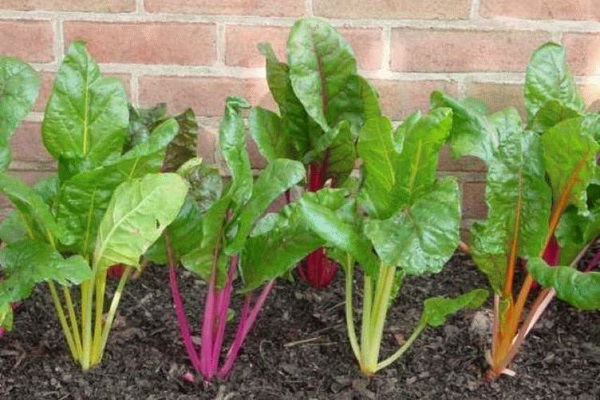
Beet greens are added as an ingredient in salads. Also dense petioles are not thrown away. They are stewed, used for pickling and even fermented for the winter.
A variety of chard varieties
There are several varieties of chard used to grow the beetroot. Their difference lies in the color of the petioles (green, scarlet), in terms of ripening and the purpose of the foliage. They practically do not differ in the way of cultivation.

Red Swiss chard is planted in mid-April when temperatures are stable. The planted bed is covered with foil. With this method, conditions are created for faster germination of seeds.
This variety is characterized by reduced activity in the flowering process. The first crop can be harvested 40–45 days after planting the seeds. This variety of beets has a large rosette. Therefore, it must be thinned out as it grows. If the climatic conditions are dry, then watering is recommended.
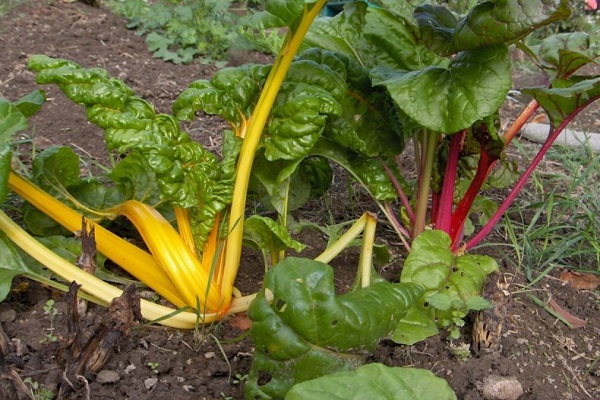
The chard variety Emerald has a relatively late ripening. At least 2 months pass from planting seeds and emergence to the first harvest. This culture has small rosettes and very large, juicy petioles. They are often used for stewing or pickling.
Planting and care rules
Preparation of beds for sowing chard is carried out in the autumn. Since the root system of this culture penetrates deeply into the soil, deep digging should be carried out. It is optimal to dig to a depth of at least 30 cm.At this time, if necessary, a small amount of humus and potash fertilizer is applied. If the soil is clayey and heavy, the leaves will be dense and rough. But if the soil is fertile enough, then fertilization is not necessary.
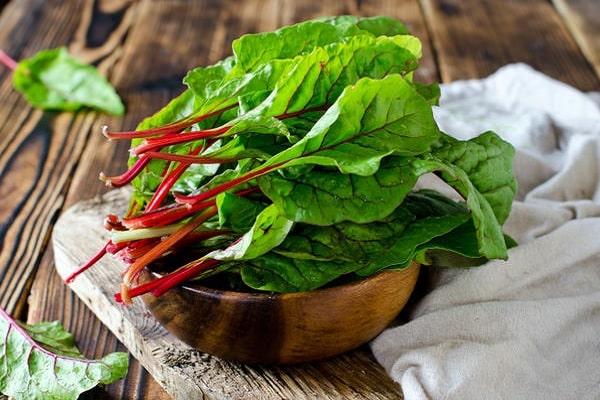
Seed germination method
To ensure the rapid germination of seeds planted in the ground, they are pre-soaked for 2 days in water. A handful of seeds are wrapped in damp gauze and placed in a warm place. If the soil is fertile and light, then soaking is not necessary.
Usually, the planting time for chard coincides with planting potatoes. At this time, the soil warms up to the required level.
In the case of planting seeds in the spring in cold soil, this is fraught with the appearance of seed arrows, and not a leaf mass. To protect the plants from such a process, the bed is covered with a film to maintain moisture and maintain temperature.
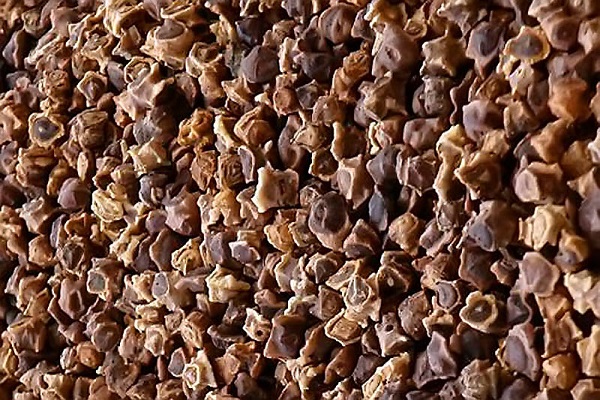
Seeds are planted in shallow furrows (about 3 cm). Shoots appear after 2 weeks. The first loosening is recommended after the appearance of several leaves on the plants. At the same time, excess plants are removed. Weaker plants should be pulled out.
This crop can be grown in seedlings. Transplanting seedlings into the ground is carried out after warming up the soil to at least +10 degrees.
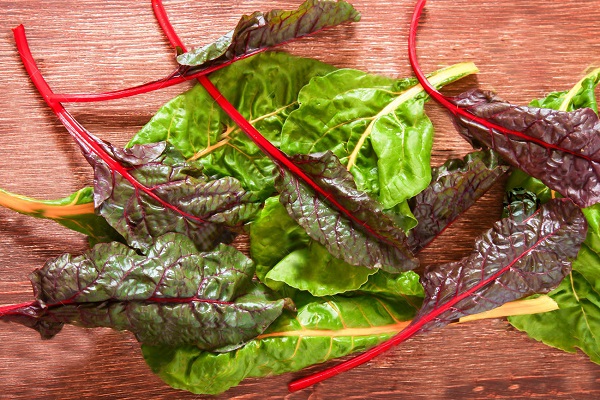
Subsequent care consists in the timely loosening of the soil and thinning the bushes. Chard is not often watered because it is resistant to arid conditions. Only with a significant drying of the soil is additional moistening carried out.
In heated greenhouses, Swiss chard is produced even in winter. In closed greenhouses, watering is carried out approximately once a week. Simultaneously with this, liquid mineral fertilizers are applied. For this culture, too high a temperature is unacceptable, this can cause the formation of arrows.
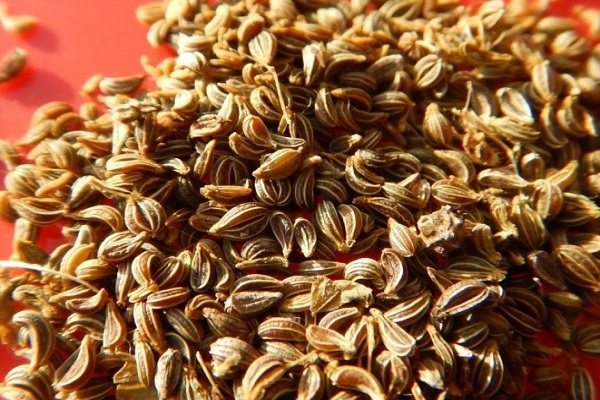
Crop propagation and harvesting methods
This culture is planted not only with seeds or seedlings, but also with roots. When planting with roots, a growth point is left on the surface. They quickly take root in conditions of the required humidity and temperature conditions, and later form a green mass.
The roots are left in the soil until the next season. The bed with the planted rhizomes is covered with mulch. With this method, it is possible to get a very early harvest; already in mid-April, the first greens are cut in the southern regions.
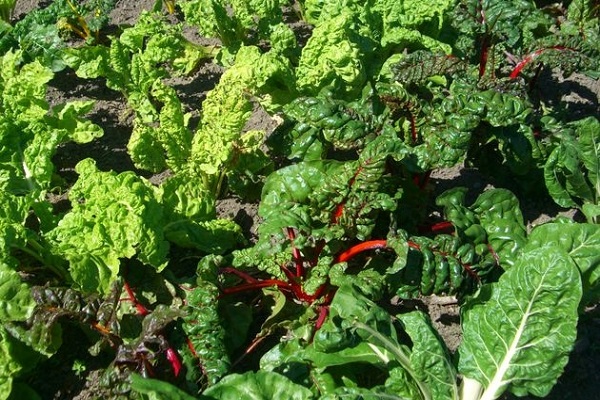
Even by planting this plant in a pot on a windowsill, you can pick the juicy leaves and use it for making salads. In this way, you can harvest green foliage in any season of the year.
The leaves should be cut from the outside, as the rosette will continue to form a new green mass. The more you cut the leaves, the more magnificent this bush subsequently becomes, releasing more and more new shoots.
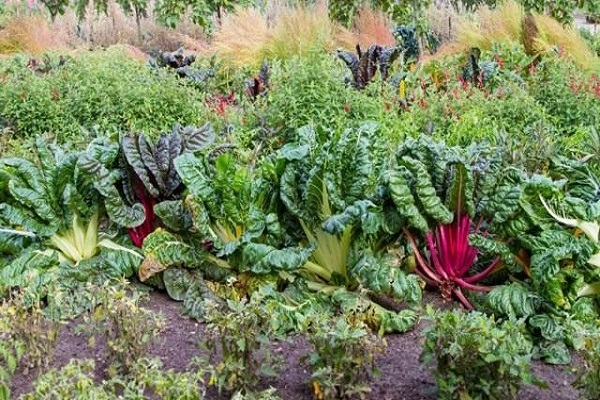
Pests and diseases
Mangold is considered a disease-resistant plant, but powdery mildew sometimes attacks it. This occurs when planting in beds that have already been affected by a fungal infection.
Of the pests, beet aphids and earthen fleas are the most dangerous. To cope with them, plants are sprayed with ready-made insecticides, infusion of onion scales or other well-known folk methods.
